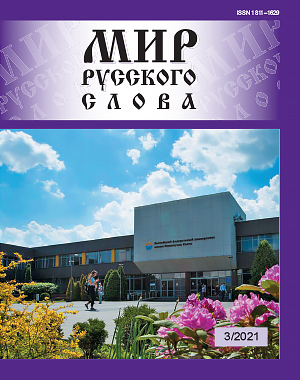Information Structure of a Popular Scientific Essay: on the Material of Essays on the Theme of Nature in the Journal “Science and Life”
DOI:
https://doi.org/10.24412/1811-1629-2021-3-67-72Abstract
The author argues that complex composition of texts of popular science essays revealed as a result of linguistic research, including scientific, journalistic, artistic and everyday life subtexts, raised the question of the motives of addressing them and their real interaction in the text, which directed the research interest in the composition of essays with subsequent modeling of their information structure, which reflects the order and methods of introducing information. All this, in turn, determined attention to trends in the targeted selection and use of language tools. It turned out to be important to observe the type of composition, which until now remained in the shadow of the event type of narrative, which was dominant in texts and was associated with a poetic test. The semantic analysis determined the appeal to the types of linguistic meanings, among which the event and the fact turned out to be significant. Taking these circumstances into account made it possible to follow the logical development of thought, implemented in the text of the essay, and substantiate the regularity of including in it the noted subtexts, as well as the appeal to the linguistic means used in them, allowing to activate the interaction (or “mixing”) of the cognitive components of consciousness. The analysis makes it possible to draw conclusions about the type of composition characteristic of the essay as a genre, which is close to argument as a functional and semantic type of speech, about the special role of the headline complex of the essay, which determines the further presentation and directs the reader's attention, about the role of including poetic texts in it, about the general pragmatic attitude that fits into the nature of modern media.
Keywords:
subtext in the text, composition, introduction component, main and final parts, scientifically labeled language means
Downloads
References
Словари и справочники
Литература
References
Downloads
Published
How to Cite
Issue
Section
License
Articles of "The World of Russian Word" are open access distributed under the terms of the License Agreement with Saint Petersburg State University, which permits to the authors unrestricted distribution and self-archiving free of charge.




